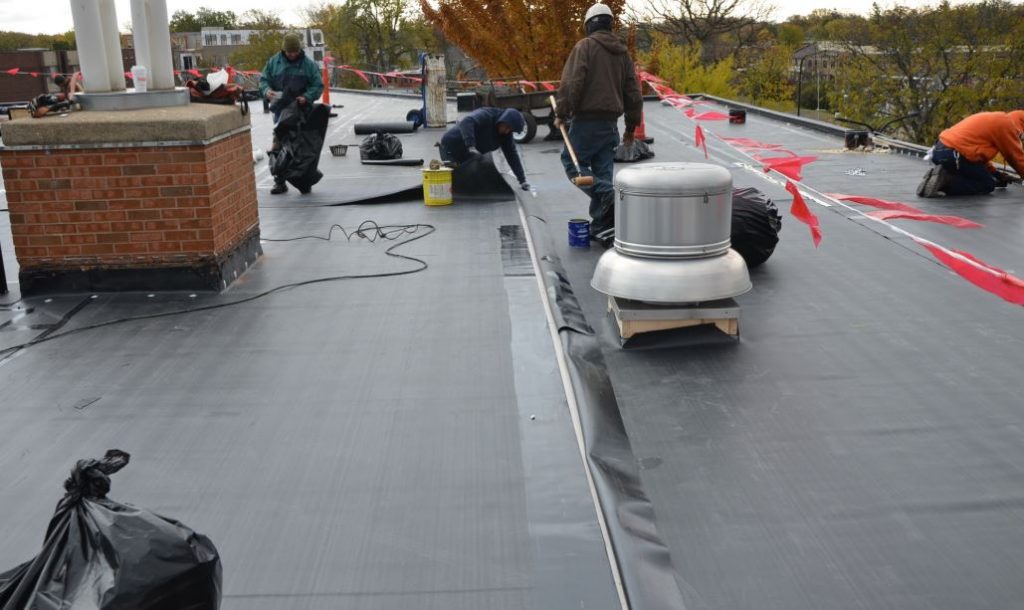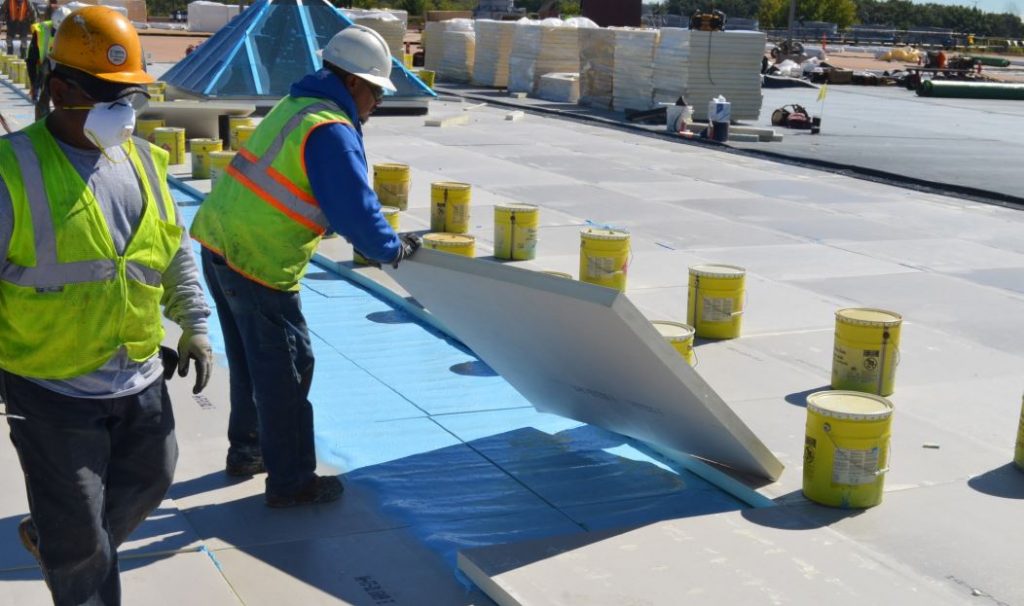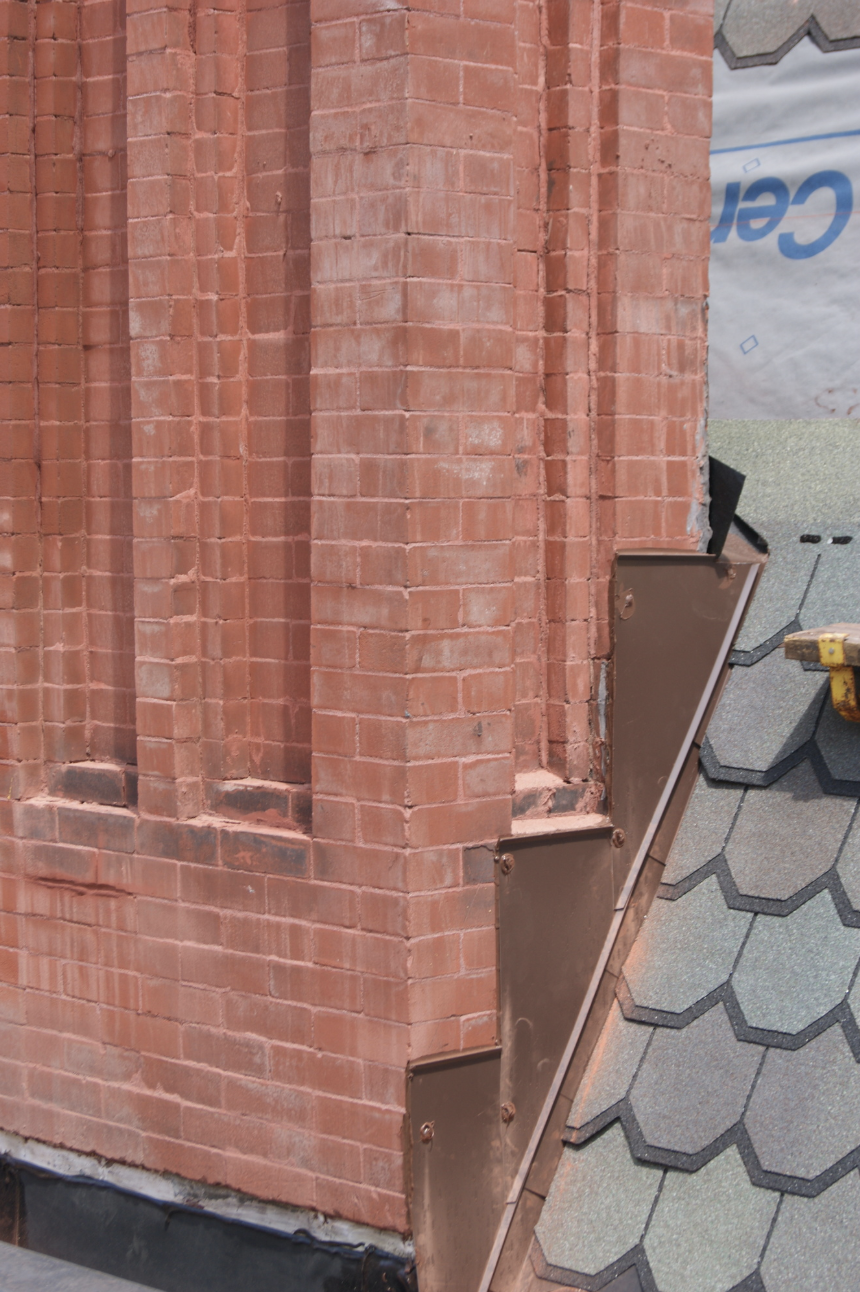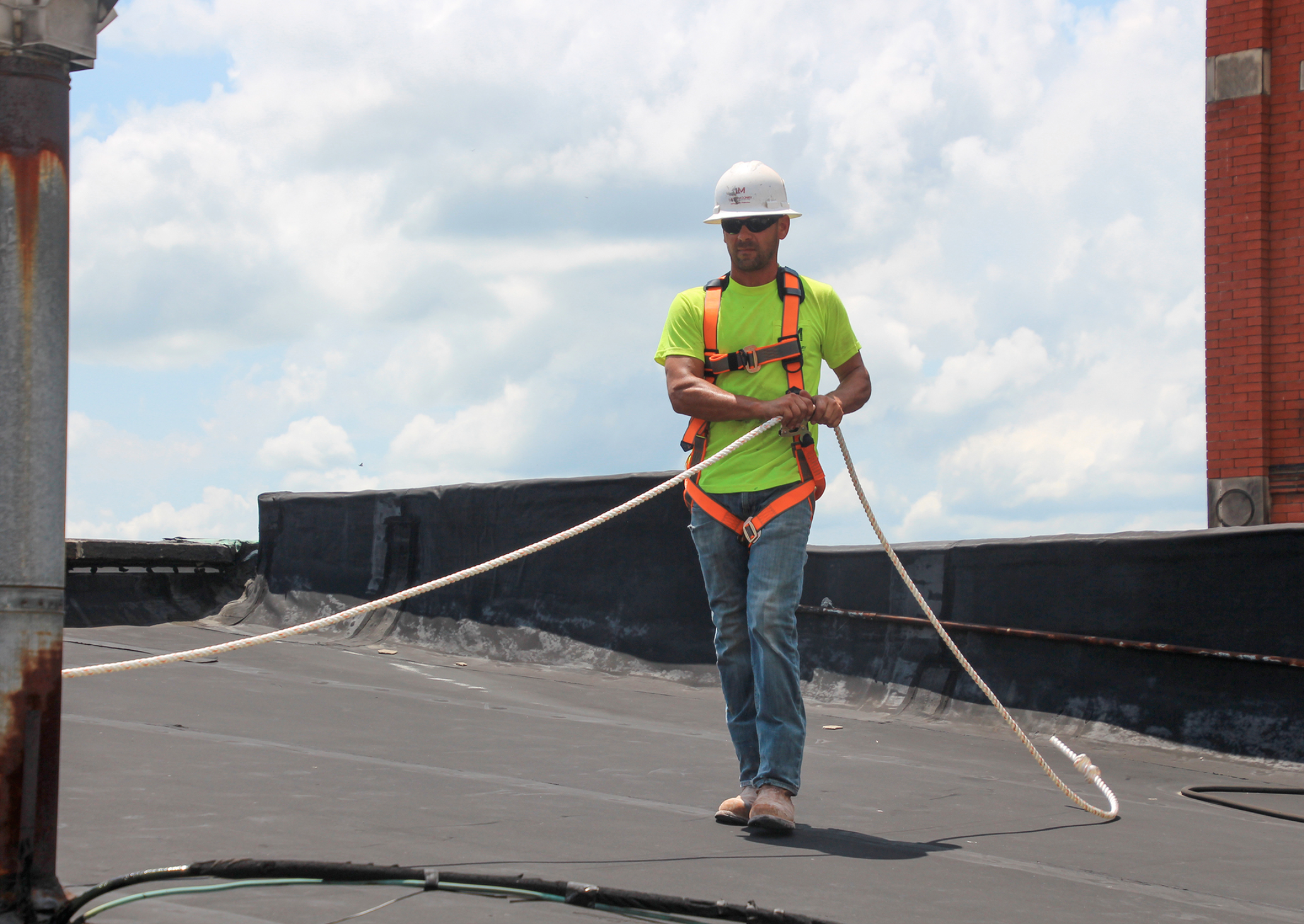
Several millennia ago, early man — and the wife and kids — decided that life in a cave was a little dark, damp and confining, and started thinking about a better place to live. This led, eventually, to the need for a roof. Sod was the obvious first choice for a roofing material — abundant supply, close at hand, pretty simple to install, providing good insulation — but not very waterproof and very prone to catching fire in dry weather. Whether that caveman knew he had installed the first “green roof” is unknown.
Fast-forward to the multiple choices that we now have to shelter ourselves and the structures where we work, learn, shop and perform hundreds of other activities. In some ways, the challenges are the same as they were thousands of years ago: keep the occupants dry and comfortable and protect the systems in the building, although those systems are vastly more complex than they were for our ancestor emerging from his cave. A few other things have changed, as well, including the cost of energy for heating, cooling and running building systems. The challenge today is still to keep a building and its occupants protected from the outside elements. But an equally important challenge, given rising energy costs, is to keep energy expenses from literally going through the roof.

Roofing contractors are meeting this challenge by paying increased attention to places in a roofing system that might allow penetration of air, either escaping from the inside or penetrating from the outside. To get an update on state-of-the art thinking, we talked to one of the most knowledge people who study this problem.
André Desjarlais is the Program Manager of the Building Envelopes Research Program at Oak Ridge National Laboratory. He has spent the majority of his professional career “developing novel building envelope technologies and assessing their market viability.” Much of his recent focus has been on developing systems that will prevent energy loss. Roof color has been extensively discussed related to energy use, with general agreement that reflective roofs save energy in warm to hot climates, and dark membranes are the most economical choice in cool to cold climates. However, there are a broad variety of other factors that influence the efficiency of a roofing system.

For instance, referring to low-slope roofing, Desjarlais points out that adequate insulation, defined by recent building codes, is essential to ensure an effective roofing system. “If we are in a jurisdiction that has adopted the most recent versions of the energy code, IECC 2015, we’ve really done a good job of increasing our insulation levels. Hooray for us — we have finally acknowledged that energy is important and we are mandating reasonable amounts of insulation to be put in commercial roofing.” Experts also note that it is important to install insulation in multiple layers and stagger the insulation joint. Studies have shown that up to 10 percent of the insulation’s R-Value is lost due to joints in the insulation.
Assuming the roof color is appropriate to the specific climate where it is being used, and insulation levels meet the latest codes, then other potential energy losses, specifically air flow or air leakage, become important. Desjarlais says the connection between the membrane and the perimeter of the building requires special attention. “How do we attach the membrane to the perimeter of the building and how do we make that connection continuous with the air barrier system of the walls?” Desjarlais says it is critical to avoid creating a path or paths for air to flow around the membrane and into the perimeter. “We need to have a continuous air barrier system, so the issue is how do you connect the wall and the roof system together?” He points out that this task can be most challenging during a retrofit to replace the roof since the parameters of the job may not include repair on the adjacent walls. Nonetheless, the connection still needs to be made securely.

It’s also important, Desjarlais continues, to note that there are several ways for air to either penetrate or escape from a building. “Air leakage” refers to air that starts on one side of the roof and gets to the other side, so it can start from the inside of the building and work its way outdoors, or start from the outside of the building and work its way in. Either way, there is energy loss.
Another kind of energy loss is “air intrusion.” This occurs when air that starts inside the building works its way through the roofing system but doesn’t make it to the outside, instead looping back to the interior. This is likely to be a problem when single-ply membranes are mechanically attached. When wind flows over the surface of the roof and the membrane billows slightly, it creates a void, and that void needs to be filled. The air that fills the void is coming from the interior of the building. So as the roof flutters, it is pumping air into and out of the roofing system. The air can also be carrying moisture that can condense under the roofing membrane.
If you are in a cold climate, the warm air from the interior of the building is chilled by its contact with the cold roofing membrane; if it is summer, the air becomes warmer. Either way, the air needs to be reconditioned when it returns to the interior of the building, driving up energy costs. [Click here, for a video showing the impact of “fluttering” on a roofing system, and the preferred alternative of a fully adhered system.
If fluttering is a potential problem, Desjarlais says, some kind of control should be put on the interior side of the roof, to make it hard for the air to flow to the underside of the membrane. This also extends the service life of the roof, preventing the wear and tear on the roofing membrane that can occur with fluttering.
There’s no doubt that creating an energy-efficient roofing system demands an investment in time and resources. But some currently available roofing membranes are setting new records for durability: EPDM, for instance, if properly maintained and installed, is projected to last up to 40 years. A well-designed, well-installed roofing system that prevents energy loss over four decades could provide invaluable protection against rising energy costs and a volatile energy market.
About the Author: Louisa Hart is the director of communications for the Washington-based EPDM Roofing Association (ERA). For more information, visit www.epdmroofs.org.






Be the first to comment on "Developing Roof Systems That Prevent Energy Loss"